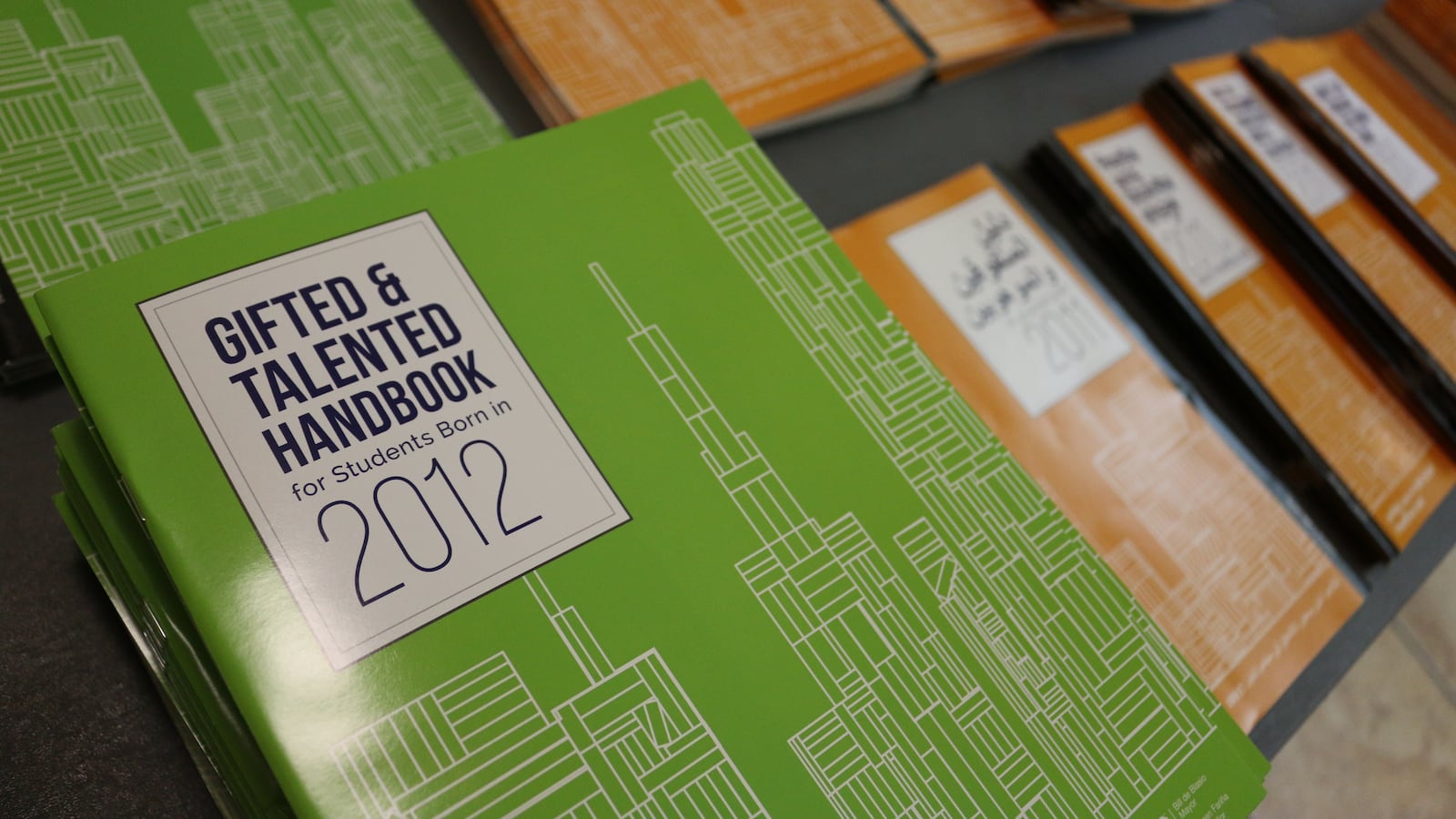Efforts to tweak how students are admitted to many New York City schools are underway, but one thing isn’t changing much: where students are posting test scores high enough to qualify them for gifted programs.
This year, 32,841 students took the city’s exam for giftedness and nearly a quarter received a score allowing them to advance to the next phase of the application process, the city’s education department announced Tuesday.
As has historically been the case, more affluent areas such as Districts 2 and 3 in Manhattan and District 15 in Brooklyn had the most families apply — and also the highest rate of students scoring in the 90th percentile or above, making them eligible for gifted programs.
That means the stark segregation of the city’s gifted classes is on track to persist another year. Enrollment in them is almost the reverse of the overall demographics in the school system: Black and Hispanic students make up only 27 percent of students in the classes, though they comprise close to 70 percent of students citywide.
That disparity has become one of several flashpoints as the city grapples with whether and how to promote racial and economic integration. But as the city has encouraged parent councils to consider integration when drawing zone lines, incentivized communities to rethink middle school admissions, and lobbied to change admissions at some of the most elite high schools, it has not made a substantial dent in which students are admitted to gifted programs via the screening exam.
In District 2, which includes the Upper East Side and much of Manhattan below 59th Street, more than 1,200 children entering kindergarten through third grade met the city’s bar for giftedness.
In contrast, five districts that are smaller and far less affluent — 7, 9, and 12 in the Bronx and 23 and 32 in Brooklyn — each had fewer than 20 children score at that level.
Most of those districts are also part of a new initiative to expand gifted programs in areas where few students tend to qualify via the screening test. Districts in that initiative are inviting all second-graders with advanced skills to apply for gifted programs, and their teacher recommendations and class performance will factor into whether they are admitted in third grade. The initiative reflects an approach that experts say is more likely to screen for students’ own aptitude rather than advantages conferred by wealth or parent involvement — and so far it has yielded classes where the vast majority of students are black or Hispanic.
Families of children who qualified via the screening exam must next submit an application ranking their preferred programs. The department will match students and programs in June.
Six schools across the city — out of more than 100 that house gifted programs that admitted students via the exam — have opted to give an edge in admissions to students from low-income families, students who do not speak English fluently, or students who are homeless.
Correction: April 16, 2018: This article has been corrected with accurate statistics about how many children passed the city’s bar for giftedness in Districts 2 and 23.

